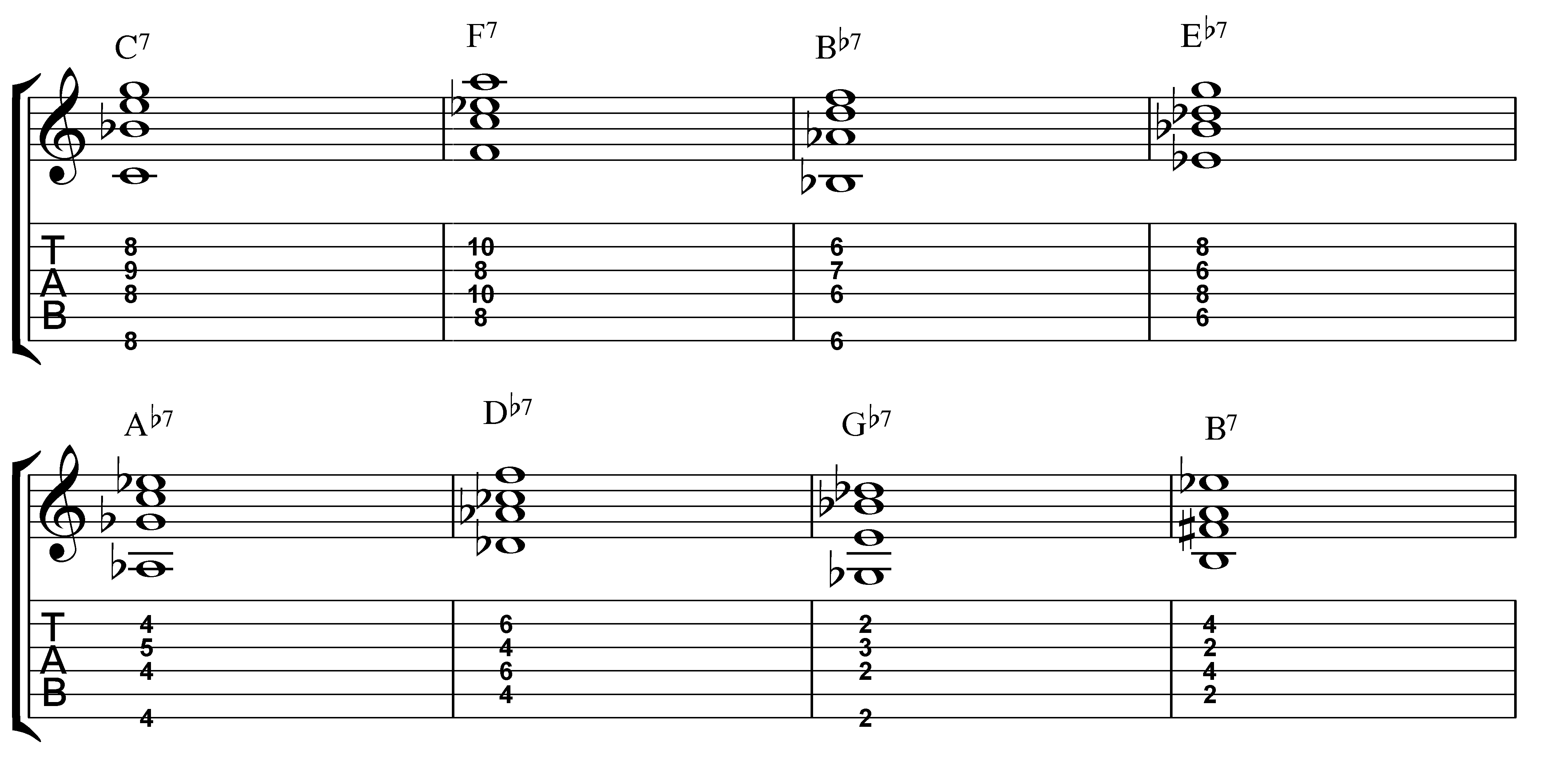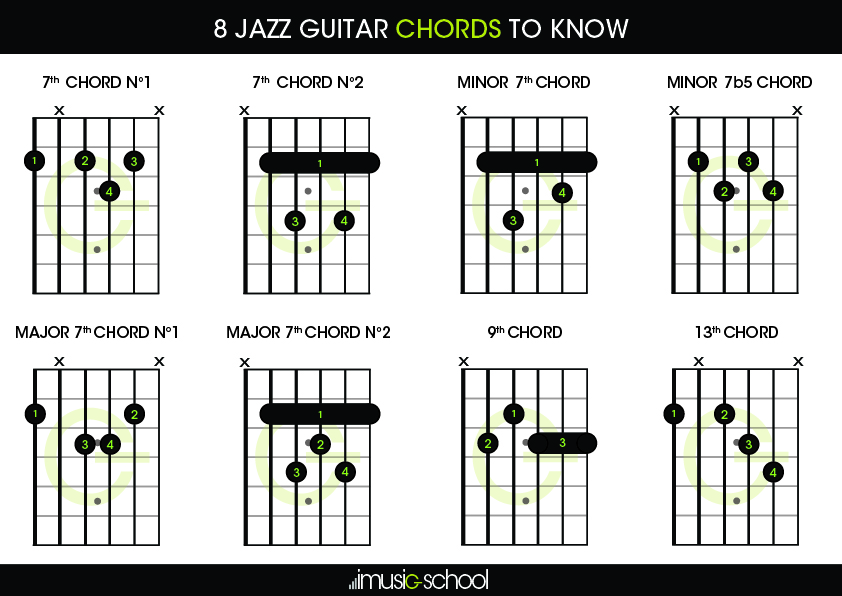
#Tab notes for jazz guitar series#
He did warn us not to mention it to anyone else though- since nobody would take us seriously :-)īy the way, Whit Sidener also came up with most of the names for those Diatonic Modes: what a logical, clever, and yet so simple idea it is to retain the original series from the Greek modes of the Major Scale ! Other names for those modes come from Ron Miller, another one of my teacher from UofM. Whit Sidener, one of my Improvisation teachers at the University of Miami brought up that unusual perspective. The notes of that scale also happen to be the notes of a G Major Scale of which the root (G) would have been sharped. Note: did anyone ever tell you that the Altered scale was actually the equivalent of IONIAN #1 ? Think about that !!! For example, G# ALTERED-DOMINANT is the 7th Mode from A Melodic Minor. The symbol for the mode is: +7(b9 #9 #11) which tells us that it fits a +7 chord (R, M3, +5, m7) and has the following extensions: b9 #9 #11. Here is another discrepancy: the chord built on the 7th degree of the Melodic Minor Scale is a Minor 7(b5), yet the corresponding mode (the Altered scale) is used over a Dominant 7 chord.

Same approach with the 2nd mode from Melodic Minor (Phrygian #6). In other words, what was previously the m3 is now labeled a #9. The sus7 chord is: R, P4, P5, m7 (no 3rd) and the remaining 3 extensions are now: b9, #9, b13. The 7 notes of the scale are the same, but we will simply organize them slightly differently. Here is an example: for Ionian, I prefer to think:Įven though the chord built on the 3rd degree of the Major Scale is a Minor 7 chord, it is preferable to think of the corresponding mode (Phrygian) as having a sus7 sound. I find that system very practical, as we get to memorize easily the chord/scale relationship associated with each mode. The sum of all 7 notes gives us the complete mode. Other important scales are 3 symmetrical ones: Whole-Tone, Diminished and Augmented- but those do not exactly generate modes, so I won't discuss them in this article).įor every mode listed, I used a chord symbol consisting of a chord type (4 notes) complemented by extensions written in parentheses (3 notes). (By the way, yes, I'm assuming that you do know how modes are extracted from their respective parent scales. There are 4 such scales:ġ) The MAJOR SCALE which generates the following Modes:Ģ) The MELODIC MINOR SCALE which generates the following Modes:ģ) The HARMONIC MINOR SCALE which generates the following Modes:Ĥ) The HARMONIC MAJOR SCALE which generates the following Modes:Įach one of the parent scales generates 7 diatonic Modes, so we already have 28 modes to deal with. Modes are generated by "parent scales" (also called "source scales"). so let's see what we can learn here.įirst of all, here are a few considerations about what we call the Modes: With that said, however, it is still important to understand the relationship between Chords and Scales. There are some definitely more useful approaches to playing over changes (like chord-tones, arpeggios, guide-tones, etc.) yet, everybody talks about "the Modes" as if they were the most important thing to know when learning to play Jazz !!! I should actually start this essay with a disclaimer, as those of you who have already heard me talk about scales know that I have reservations when it comes to learning Improvisation while running Modes up and down.

Jazz Chords & Jazz Scales Relationships - jazz guitar modes - modes - improvisation - Bruno Pelletier


 0 kommentar(er)
0 kommentar(er)
